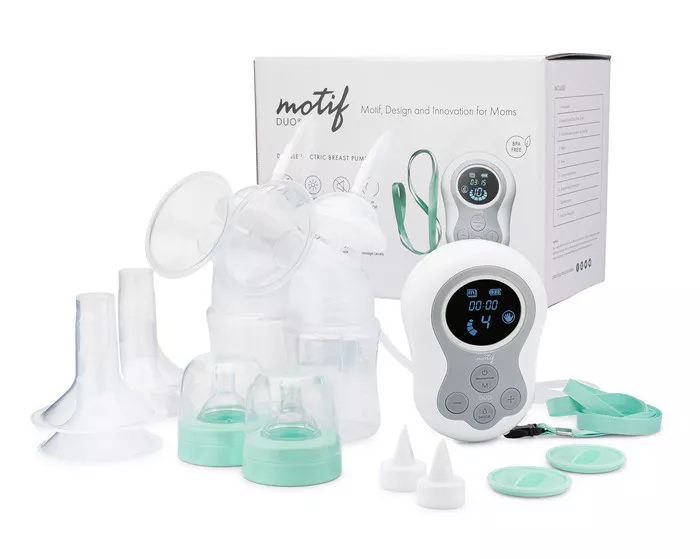Breastfeeding is one of the most natural and essential acts for a mother and her newborn. However, for various reasons, some mothers may find it challenging to directly breastfeed their babies. In such cases, breast pumps come to the rescue, offering convenience and flexibility while ensuring that infants receive the vital nourishment they need. With a plethora of breast pump options available in the market, choosing the right one can be a daunting task. This comprehensive guide aims to provide expectant and new mothers with valuable insights into what to look for in a breast pump.
Understanding Your Needs
Before delving into the features and specifications of breast pumps, it’s crucial to understand your specific needs and circumstances. Factors such as frequency of pumping, duration of usage, portability requirements, and budget constraints play a significant role in determining the most suitable breast pump for you. Additionally, consider any medical conditions or challenges you may face, such as low milk supply or inverted nipples, as these may influence your choice of pump.
Types of Breast Pumps
Breast pumps come in three primary types: manual, electric, and hands-free. Each type offers distinct advantages and is suitable for different lifestyles and preferences.
1. Manual Breast Pumps: Manual breast pumps are operated by hand, requiring the user to manually pump the handle to extract milk. These pumps are typically lightweight, portable, and affordable, making them ideal for occasional use or for mothers who pump infrequently. However, they may require more effort and time compared to electric pumps.
2. Electric Breast Pumps: Electric breast pumps are powered by electricity or batteries, offering automated pumping functionality. These pumps are efficient, convenient, and suitable for regular or frequent use. They come in both single and double pump options, allowing mothers to express milk from one or both breasts simultaneously. Electric pumps are available in a range of models, from basic to hospital-grade, catering to various needs and budgets.
3. Hands-Free Breast Pumps: Hands-free breast pumps, also known as wearable or mobile pumps, offer the ultimate convenience for busy mothers. These pumps are designed to be worn discreetly inside a bra, allowing mothers to pump hands-free while performing other tasks or activities. Hands-free pumps are typically electric and may feature wireless or Bluetooth connectivity for remote control and monitoring.
Key Features to Consider
When evaluating breast pump options, several key features should be taken into account to ensure optimal performance, comfort, and usability.
1. Suction Strength and Adjustability: The suction strength of a breast pump plays a crucial role in effectively expressing milk. Look for pumps that offer adjustable suction levels, allowing you to customize the intensity according to your comfort and milk flow.
2. Pumping Modes and Settings: Many electric breast pumps come with multiple pumping modes and settings to simulate the natural sucking pattern of a baby. These modes may include stimulation mode to initiate milk letdown and expression mode for efficient milk removal. Additionally, features such as adjustable speed and rhythm can enhance comfort and milk output.
3. Comfort and Fit: Comfort is paramount when using a breast pump, especially for extended pumping sessions. Opt for pumps with soft silicone breast shields or cushions that conform to your breast shape and size. Some pumps offer different flange sizes to accommodate varying nipple sizes, ensuring a comfortable and proper fit.
4. Portability and Battery Life: If you plan to pump on the go or while traveling, consider the portability and battery life of the breast pump. Look for compact and lightweight models that are easy to transport and operate discreetly. Battery-powered pumps should offer sufficient battery life to last through multiple pumping sessions without the need for frequent recharging.
5. Hygiene and Ease of Cleaning: Maintaining proper hygiene is essential to prevent contamination and ensure the safety of expressed milk. Choose breast pumps with detachable parts that are easy to disassemble, clean, and sterilize. Dishwasher-safe components or pumps with steam sterilization capabilities can streamline the cleaning process and save time for busy mothers.
6. Noise Level: The noise level of a breast pump can impact privacy and discretion, especially when pumping in public or shared spaces. Look for pumps with quiet operation to minimize noise disruption and maintain privacy during pumping sessions. Quieter pumps also reduce the risk of waking a sleeping baby or disturbing others nearby.
7. Cost and Warranty: Breast pumps vary in price, ranging from budget-friendly options to high-end models with advanced features. Consider your budget constraints and weigh the cost against the features and performance offered by the pump. Additionally, check the warranty period and coverage to ensure peace of mind and protection against any potential defects or malfunctions.
Conclusion
Choosing the right breast pump is a significant decision for breastfeeding mothers, as it directly impacts their breastfeeding journey and overall experience. By understanding your needs, evaluating different types of pumps, and considering key features such as suction strength, comfort, portability, and hygiene, you can make an informed decision that meets your requirements and preferences. Remember that every mother and baby is unique, so don’t hesitate to seek advice from healthcare professionals or lactation consultants for personalized guidance and support in selecting the perfect breast pump for you and your little one.


